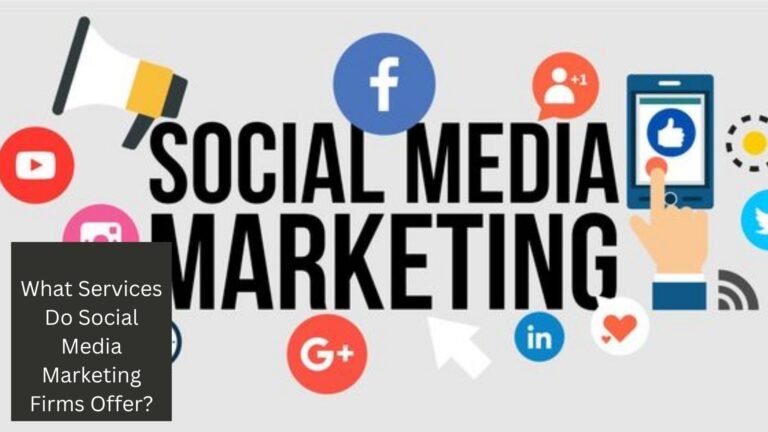Top Mistakes to Prevent in Efforts at Education Marketing
Institutions struggle to distinguish and attract students in a more cutthroat environment of learning. Beyond conventional brochures and open house events, education marketing has developed to include digital platforms, social media, and data analytics in major importance. But many educational institutions from colleges to K–12 classrooms often make basic errors that compromise their marketing initiatives. Knowing and avoiding these traps can help marketing success to be more enhanced. This post will go over the main blunders to avoid in school marketing and how you could design a more successful plan.
1. Not Clearly Target Audience
Not precisely defining a target audience is one of the most often occurring errors in educational marketing. Seeking to appeal to everyone, from prospective students and parents to contributors and alumni, schools may take a “one-size-fits-all” strategy. Without a defined goal, however, your message could become too vague and useless.
How To Prevent It :
Create thorough identities for every division of your audience. A university could include personalities for parents, alumni, high school students, and adults learning, for instance. Customize your channels of marketing, language, and approach for every group. While parents may react better to email advertising or educational webinars, younger children may find social media sites like Instagram or TikHub useful.
2. Ignoring SEO’s Authority
Though many educational institutions undervalue it, SEO Services is very vital in modern digital marketing. Potential students or parents will find it more difficult to discover you online if your school website is not search-engine friendly. Many colleges make investments in a stunning website but overlook the requirement of it being discoverable.
How to Prevent It:
Make investments in an SEO plan including on-page technical enhancements, content optimization, and keyword research. If you run a private school in New York, for instance, maximizing for phrases like “best private schools in New York” might generate natural search engine activity. Verify that your website loads fast, navigates easily, and is mobile-friendly. Boost search engine results and user experience by including pertinent blogs, FAQ pages, and resource areas.
3. Inconsistent Branding
Developing a clear and trustworthy brand depends mostly on consistency. Schools that neglect to have a consistent brand across all media online or offline run the danger of confusing their students and eroding their reputation. When many departments or teams handle several marketing channels without a cohesive plan, disjointed branding results.
How To Prevent It:
Establish and follow brand rules covering every aspect of logo use, tone of voice, typeface, and color schemes. Make sure the same values, look and feel permeate all marketing tools, social media entries, and website content. This consistency will help your organization be better known and foster confidence. Frequent internal branding communication helps to guarantee that all those engaged in marketing and communications share the same values.
4. Neglecting to Use Analytics and Data
Efforts in marketing devoid of data are like aiming in the dark. Many educational institutions fall into the error of neglecting the insights offered by analytics tools or failing to monitor the success of their marketing activities. They so cannot know what is working or what ought to be changed.
How To Avoid It:
Track your marketing initiatives using technologies such as Google Analytics, social media analytics, and email marketing systems. Important insights may come from key performance indicators (KPIs) including social media engagement, lead conversion rates, and website traffic. Review the data often to see patterns, grasp the behavior of your audience, and modify your plan using facts. For instance, you might concentrate more on a certain kind of material in future campaigns if you find that it produces more leads or more interaction.
5. Undervaluation of Social Proof
In the field of Best Higher Education Marketing Services, trust is crucial. Parents and students want to know that an institution produces outcomes that are respectable and reliable. However, many institutions fail to highlight enough social evidence, such as testimonials, reviews, and success stories, which would ensure future households understand the value of their education.
How To Avoid It:
On your website and social media, compile and highlight quotes from parents, graduates, and present students. For your university, case studies, video interviews, and reviews may provide great validation. Emphasize important student successes and alumni accomplishments. Urge families to post reviews on sites like Google, Facebook, and educational-specific review sites. Don’t discount social proof, one of the most effective components of marketing.
6. Excluding Mobile Optimization
Ignoring mobile optimization would seriously impede your marketing efforts as more than half of online traffic originates from mobile devices. Designing websites and digital material mostly for desktop users results in a bad mobile experience, typical error schools make.
How To Prevent It:
Make sure your website is completely tablet and smartphone compatible, and simple to use. A mobile-friendly design calls for clear content, simple navigation, and quick load times. Furthermore, make sure that on mobile devices all forms such as entrance questions or event sign-ups are simple to finish. User involvement and conversions may be much raised by a flawless mobile experience.
7. Neglecting Email Marketing
Email marketing is still among the best ways to interact with parents, alumni, present and future students. Many educational institutions, however, either completely ignore email marketing or send generic, non-targeted communications that fail to appeal to their student body.
Strategies to Prevent It:
Sort your email list according to many audience categories that of potential students, parents, alumni, and contributors. Create tailored emails for every group with pertinent material. Prospective students may value information on campus tours or application deadlines, for example; alumni could be more interested in college news or fundraising projects. Regular newsletters also help your readers stay interested in events, successes, and forthcoming possibilities.
8. Ignoring Video Material
Though many educational institutions undervalue it in their marketing plans, video material has become among the most interesting means of communication. Schools depending only on text-based materials lose the ability of visual storytelling, which may be very important in the field of education marketing.
How to Avoid It:
Add movies to your marketing plan that highlight academic programs, teacher experience, student life, and campus tours. Parents and potential students may get a good sense of your university’s facilities and atmosphere via videos. Sharing video material is best done on websites such as YouTube, Instagram, and TikHub. Engaging potential students and their families also depends much on webinars, virtual Q&A sessions, and alumni interviews.
9. Not Using Paid Advertising
Depending only on word-of-mouth and organic traffic might restrict the exposure of your university. Many colleges avoid sponsored advertising because they believe it is too costly or inappropriate for their student body. Paid advertisements on Google, Facebook, and Instagram, however, may greatly increase your reach and draw a focused audience.
Tips for Avoiding It:
First, decide on platforms fit for your target demographic and create a paid advertising budget. Running Google advertisements aimed at certain keywords like “best high schools in [city]” for instance might provide qualified leads. Social media advertisements may go for parents, students, or certain demographic groups drawn in by education. Paid advertising lets you contact more individuals and, with exact targeting, it may be a reasonably cheap approach to increase enrollment.
10. Not Emphasizing Original Value Propositions
Although many schools concentrate on overall advantages like academic success or extracurricular activities, these ideas mesh quite well with what other schools have to offer. Your university runs the danger of being seen as simply another university without a distinct value proposition (UVP).
How to Avoid It:
What distinguishes your school from others? This may be your school’s culture, a specific curriculum, a distinctive program, or even an innovation emphasis. Share this UVP regularly via all of the marketing outlets. Showcase these differentiators via your website, social media, and other channels. If your school has a modern STEM program, for instance, make sure the program is emphasized using success stories, student quotes, and result statistics.
11. Ignoring Local SEO
Many schools, especially those catering to specialized areas, ignore the need for local SEO. Local SEO lets your university show up in search results for searches like “schools near me” or “best private schools in [city].” Ignoring this factor could cause lost chances to attract families from your neighborhood.
How to Avoid It :
Provide correct contact information, add great photos, and keep your location and hours current to maximize your Google My Business (GMB) page. Motivated families should post reviews as they will help you show better on local search results. Create localized materials such as press releases, news reports, or blog entries emphasizing community engagement or local activities as well.
Final Thought: Steering Clear of Common Success Mistakes
Although marketing in the education industry is a difficult and always changing process, avoiding these typical errors can help your school to be successful. From establishing a clear target audience and adopting SEO to producing engaging material and using analytics, every element of your approach is very important in drawing and keeping students. Education marketing is about creating trust, involvement, and long-term connections with your community not just about being recognized. Your university may enhance its marketing initiatives and experience long-term success by avoiding these typical mistakes.






